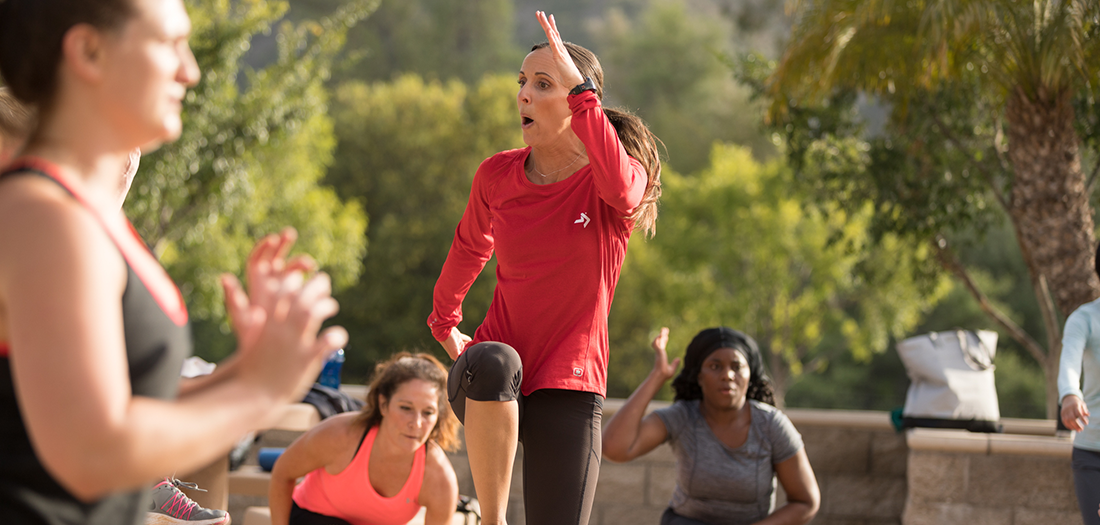Your love for all points team health and fitness has actually led you to discover what it requires to relocate from the front row to deal with the group. Possibilities are you’ve run across various resources discussing the need to become certified. But beyond that essential step, you’re left wondering what else you need to do to land your first class. We thought you’d appreciate a bit of help!
While there are many ways to approach becoming a group fitness instructor, we have actually compiled the top five steps from a group of diverse leaders in the group fitness community. The following represent the most important steps and, while they may not always come in this exact order, they are the essential ingredients to becoming an impactful group fitness instructor. So, let’s take a look.
Step 1: Obtain a Nationally Accredited Primary Certification
Obtaining your primary group fitness certification is a must and ideally comes first. A primary certification in group fitness prepares for you for the “role” of being a group fitness instructor. It provides the information you demand to be competent in general fitness classes (e.g., cardio, strength, flexibility, etc.). In addition, you will learn the basics of exercise programming, cueing and music.
It is essential to narrow your search to group fitness certifications that are nationally accredited. Review the available study materials, information regarding registering for and sitting for the exam and the recertification requirements and process. It’s also a good idea to look into the association’s ongoing support for your continued education, as well as their customer service offerings.
Step 2: Identify your Format(s)
You’ll next need to determine which types of classes you’d like to teach. Again, ideally this decision is based primarily on your personal preference and natural skillset. However, you may also want to consider what type of specialization might be required to get your foot in the door as an instructor.
Be sure to begin your research by taking classes. If you’re already a group fitness groupie, expand your palate by trying new classes, instructors and environments to get a better sense of the available options. Consider what it would be like to teach the format versus participate. You will find some classes are a better fit for you to lead than others, even if you love taking the class.
Once you’ve narrowed down your choices, determine if additional training is necessary. Many formats require format-specific (or, sometimes called specialty training) certifications. The facility where you want to work may conduct the trainings in-house, or you may obtain the qualification through a third-party organization. Examples include indoor cycling certifying organizations, Zumba, Les Mills formats such as BODYPUMP or GRIT, HIGH Fitness and SoulBody fitness.
Step 3: Carefully Vet Opportunities
Most instructors begin their careers working for a facility, but there are also options to be self-employed. Teaching at a facility usually provides a steady flow of potential clients, exposure to a wide variety of class formats, access to formal and informal mentors, education opportunities and a community. Be sure to explore all employment options and opportunities that exist for you to remain independent.
Be sure to determine whether teaching in-person or virtually is a better fit for you. Depending on where you choose to teach, you might decide to hone your skills in both.
Step 4: Prepare for Opportunities
Step 4 is actually a bunch of little steps that, combined, prepare you for the many opportunities that exist for group fitness instructors. It’s less of a box that you tick and then forget about but, rather, tasks that you start doing and continue doing throughout your career to be ready for the wide world of fitness.
Begin by connecting to a network. Check with your primary group fitness certifying and specialty certification organizations, as well as with independent group fitness leaders to find formal and informal networking opportunities. A network can help you fill in the gaps between what you learned in your formal education and the skills you need to make it in the group fitness world. We’d love to have you end up being part of our family at the ACE Group Fit page on Facebook.
Another excellent resource for filling in the gaps is a mentor. Do your best to find one that can help you navigate the industry and coach you on your unique path. You can find mentors at local clubs or studios, as well as in many of the networking groups described above.
More specifically, prepare for auditions and interviews by practicing, recording and watching yourself teach. If possible, ask for feedback from instructors, as well as trusted friends and family members. Then, practice some more with their respective feedback in mind. The more time you spend rehearsing, the better off you will be for the audition and your first class.
One additional preparation action is to obtain (and also then maintain) professional liability insurance. Whether you plan to teach clients virtually or in person, liability insurance is an investment you make for your peace of mind should ever be sued by a client or participant for injury or damages. Even if you plan to work at a club, studio or another establishment, carrying your own policy is a good idea.
Action 5: Plan Your Path for Growth
While your recertification is probably two years away, set out on your professional journey armed with a growth plan. Both formal and also informal education is helpful for pursuing new opportunities and also improving the experience for your current participants. The best instructors are those who commit to being lifelong learners.
A special thank you to Staci Alden, Steven Trotter, Summer Sides and also J’Lynn Morkovsky that added their proficiency to this write-up.




